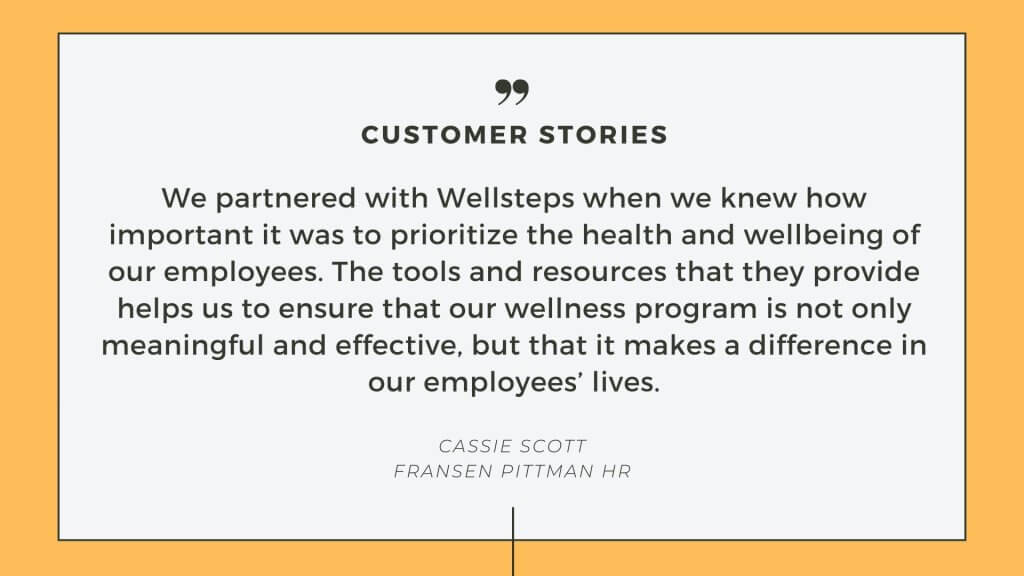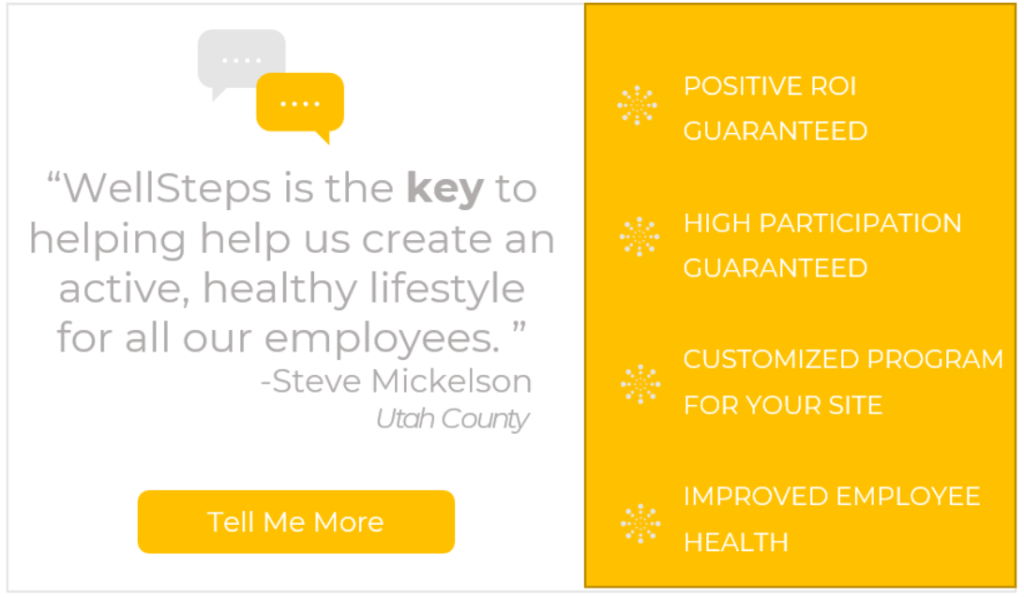There was no way of predicting how our work lives would be upended at the height of the COVID-19 pandemic. Fast forward to the present and we find that job satisfaction is not just about high pay anymore.
So what does job satisfaction mean today? It means feeling appreciated, respected, heard, and valued on the job. It also encompasses a work-life balance, remote work opportunities, and better career support.
According to the insightful survey by Owl Labs, as much as 80% of employees expect to continue working from home full time or a few days a week. They agreed that remote work (besides other drivers) greatly improved work satisfaction.

Thus, to make their employees happy at work, organizations must first be willing to get on board with the changing times.
Let’s explore what it takes to improve job satisfaction and how companies can do more for their workforce through simple yet effective changes.
How Companies Can Improve Job Satisfaction
Working on employees’ fulfillment at work is paramount if companies want to experience a smooth upward trajectory of growth and success. Committing to initiatives and measures to achieving it can lead to positive results. These include:
- minimized absenteeism
- increased employee retention
- curbed operation disruptions
- a delighted community
Here’s how employers can help improve job satisfaction to positively impact their business.
RELATED: 15 Ways To Promote High Job Satisfaction
Provide Autonomy And Freedom To Employees
Strike a balance between offering guidance to workers and allowing them to make crucial decisions on the job. When employees enjoy autonomy and freedom, they’re motivated to play to their strengths and overcome weaknesses. For some, it means understanding what one is and isn’t capable of doing.

Autonomy is similar to watching a baby learn his first steps: You’re at a safe distance as they develop a sense of balance and strength.
As you track and measure the progress of individual employees, you’ll have a better idea of their capabilities and possible shortcomings. The objective is to build trust within teams and to check in with them regularly to see how things are going.
The objective is to build trust within teams and to check in with them regularly to see how things are going.
Allow Employees To Shape Their Roles And Functions
Defining an employee’s career path is crucial and essential from a business point of view. You don’t want to invest in a team with stunted potential. Instead, you’d prefer that they realize their worth and define their futures.
The best way forward to improve job satisfaction is to help them shape their roles and functions from the get-go.
Here’s how:
- Have face-to-face time with employees and their reporting heads or senior managers
- Let employees speak for themselves on how they feel about their current roles and responsibilities, what they’d like to change, their career plans, and their plans to achieve their goals
- Listen carefully, take notes, and then put your observations forward based on what they said
- Propose a plan of action that takes their thoughts and expectations into consideration (something that can be chalked out after the meeting)
- Share your insights on their work performance and feedback (if any) and work towards a common set of goals that benefits everyone
- At the end of the discussion, convey that there will be a follow-up session to track their progress on the proposed plan with the corresponding objectives
- Set realistic timelines for tracking progress and measuring results to motivate employees to focus on their work goals
- Offer helpful, constructive feedback with the intention of improving their performance and professional skills
- During the follow-up meeting, ask employees for feedback and suggestions on aspects that can be changed or established to iron out kinks or eliminate challenges
See It In Action
Here’s an example of how to track an employee’s progress on an assigned project or task:
| Project/Task | Name of project or task |
| Timeline | 1 week/2 days/1 month/3 months |
| Objectives | Defined by a client, manager, or reporting head |
| Status | Completed/Underway/Extension requested |
| Challenges | Employees share their challenges in completing the project, how they overcame roadblocks, and what didn’t go right despite the best course of action |
| Outcome | Client/manager/reporting head comments on the positive and negative outcomes (profit margins, customer response/engagement data, and the like, depending on the outcomes relevant to the project/task) |
| Feedback | Share areas for improvement for upcoming projects/tasks, propose skill development or upskilling opportunities (to be separately tracked and measured), and communicate significant achievements |
| Rewards and Recognition | Award-based benefits for impressive track records and big/small milestones (first major sale, positive client response, etc.) |
Communicate With Your Team Often
Regular open communication is the foundation of positive employer-employee relationships. It fosters trust, improves efficiency, bolsters workplace enthusiasm, and boosts morale. That doesn’t mean spending the bulk of a day in long meetings. Rather, hold weekly catch-up sessions to ask employees about their weekend and their current status on the work front.
It’s also good practice to communicate effectively on work projects to avoid important details from going unnoticed. Formulate strategies that emphasize communication as the basis of information dissemination.
When you function as a transparent company, you set a prime example to employees on the importance of open communication.
This entails creating an efficient communication channel for team members and passing along important updates and changes as they come. It also means keeping employees in the loop on developments about the company, its activities, and its clients.
When you function as a transparent company, you set a prime example to employees on the importance of open communication.
RELATED: How Wellness Programs Help Improve Employee Morale
Offer Opportunities For Learning, a Key in Job Satisfaction
Never underestimate the power of learning, even for someone who holds the most experience. Encourage team members to seek mentoring programs and upskilling workshops if they need to brush up or develop personal or work-related skills.

There’s always room to grow, develop, and exceed in current and new scenarios. Create learning opportunities at the workplace by hiring external professionals. Or, form an internal team of experts to conduct or head weekly programs.
When you match your workforce’s enthusiasm and passion for learning, you’re building a space where people feel valued and wanted.
Track each participant’s progress and measure outcomes to assess the learning strategies’ effectiveness. Like anything new that needs to be tried and tested, reach out to employees for feedback through surveys and face-to-face discussions. Bring up assessment topics like improvements and additions.
When you match your workforce’s enthusiasm and passion for learning, you’re building a space where people feel valued and wanted. It’s a powerful way to improve job satisfaction.
RELATED: The Great Retention: Companies with High Employee Satisfaction
Fair Compensation And Authentic Recognition
Fair compensation is one of the most essential drivers in improving job satisfaction. With inflation on the rise, it’s only natural for employers to shift uncomfortably in their seats when the words ‘higher compensation’ loom large. Yet, that wouldn’t be the case if their employees were already satisfied with the company’s compensation and rewards program.
The future and profitability of your business lie in the hands of your employees. Without them, your organization’s success would be jeopardized.
When deserving employees are fairly compensated, they’re more inclined to show up, work hard, and be happy (after all, happy employees are productive employees).

Authentic recognition also plays an important role in cultivating morale, performance, and employer-employee trust. It takes more than just hard work and skills to get the job done. For many employees, it involves blood, sweat, tears, compromises, and sleepless nights.
Authentic recognition also plays an important role in cultivating morale, performance, and employer-employee trust.
Thus, it’s only fair that good work is acknowledged by not only announcing it but also celebrating the news proudly. Reward stellar work with attractive perks such as a surprise cash bonus, a week of paid leave, or free tickets to a fun event.
A great way to improve job satisfaction and employee engagement is to set up a rewards and recognition program early on. To fire up employees and keep motivation levels high, share success stories of past winners and their achievements. It’s a smart approach that will generate and encourage workplace productivity, performance, and results.
RELATED: 13 Office Wellness Ideas to Improve Employee Productivity
Measure Engagement Frequently
Employee engagement is the strong mental and emotional connection employees hold to their jobs and workplaces. Companies must understand why employees lose interest, and then create strategies that aim to turn things around.
First, conduct a survey of major workplace drivers that interfere with job satisfaction and employee engagement.
Include these most common drivers:
- Career development and advancement
- Career growth opportunities
- Workplace toxicity, favoritism, or nepotism
- Teamwork
- Rewards and recognition
- Compensation benefits
- Management reliability
- Communication within the workplace
- Trust in coworkers
- Trust in management
- Job security
- Wellness initiatives
- Work-life balance
So, gather the scores, draw up an analysis of weak drivers, and drum up improvement strategies to strengthen those areas. Once your plan of action is executed, go back to your employees every quarter to check if the ratings change.
Do the survey results get worse or better? Keep a close eye on the results, work actively to make things better for employees, and dedicate time and effort to foster a healthy work environment. These are crucial factors that help improve job satisfaction.
RELATED: 17 Employee Wellness Program Ideas to Increase Engagement
Invest in Wellness Programs and Initiatives
Building a workplace that is particular about wellness and overall well-being encourages employees to pay attention to their health. You’re not pushing them to do uncomfortable things but helping them achieve better mental, emotional, and physical conditions.
It’s time that employers acknowledge the advantages of being wellness-centric companies today. Invest in your people through a solid wellness program and initiatives that support holistic healthy habits.
As much as 35% of respondents surveyed by Wellable Labs plan to spend on wellness programs and strategies in 2022. Likewise, 43% of companies are willing to consider the same.
Implementing wellness programs is a remarkable approach that organizations are slowly adopting to improve workplace satisfaction and drive employee engagement.

Keep a Healthy, Clean, and Sociable Work Environment Creates Great Job Satisfaction
The cleanliness of a workplace is directly attributed to the work culture of a company. In short, employees need a hygienic environment to work. The absence or lack of it results in high absenteeism (from taking regular sick leaves), low productivity, and poor performance.
Invest in a reliable cleaning staff that regularly disinfects cubicles, takes out the trash, and eliminates pest or rodent infestations. Employers should also heavily promote hygiene safety measures, which will benefit employees beyond the office.
A clean environment encourages employees to enjoy breaks, eat comfortably in the cafeteria, and converse with coworkers without feeling uneasy.
RELATED: 7 Reasons Every Worksite Should Offer An Environmental Wellness Program
Support Work-Life Balance
This is about creating boundaries between one’s work and personal life. Do you receive work emails on a Saturday? That’s a case of poor work ethics at play. And when employers aren’t empathetic towards a work-life balance, their behavior rubs off on employees. It also sets a bad example that it’s okay to take your work home or on holiday.
Employers often confuse work-life balance with dedication and hard work. It’s questionable to think that blurring the line between work and life is acceptable. Worse, if it becomes a way of acknowledging performance and productivity.
When you set clear boundaries for yourself as an employer, you reap the benefits of work-life balance—better work and personal relationships, health, and business.
According to a Flexjobs survey, as much as 56% of respondents were open to quitting their jobs to achieve better work-life balance elsewhere. In the end, you’re facing major burnout and the loss of good, valuable talent.

Here’s how you can improve employee satisfaction by respecting the non-negotiable areas (and similar points that relate to your work culture:
- Maintain 4- or 5-day work weeks with Saturdays and Sundays off
- Send important emails and files by the end of the week and not over the weekend
- Avoid making or taking calls at odd hours of the night
- If employees work over the weekend, compensate those days with weekdays off
- Delegate tasks across teams with realistic timelines that don’t overlap on weekends
- Foster a work culture that respects and encourages ‘me time’ and ‘family time’ after work hours and on weekends
RELATED: The Real Reason Companies With Happy Employees Succeed
Conclusion on How to Increase Job Satisfaction For Your Employees
It’s crucial to keep a tab on how employees are doing and identify areas of improvement actively before things escalate. Companies can improve job satisfaction significantly by paying attention to changes in behaviors, work quality, and productivity.
Take the initiative and effort to understand your people and reassess current work processes to help not just them but also the future of your business. So, get started with a free demo from the WellSteps team and discover just how your customized wellness program can do just that!
